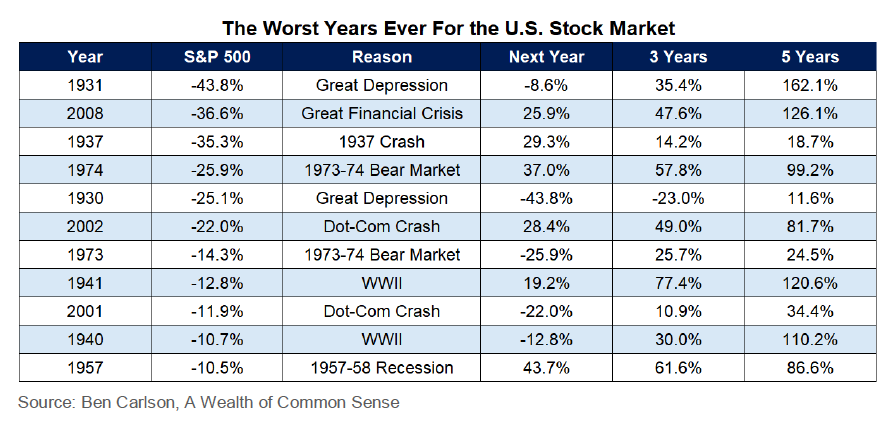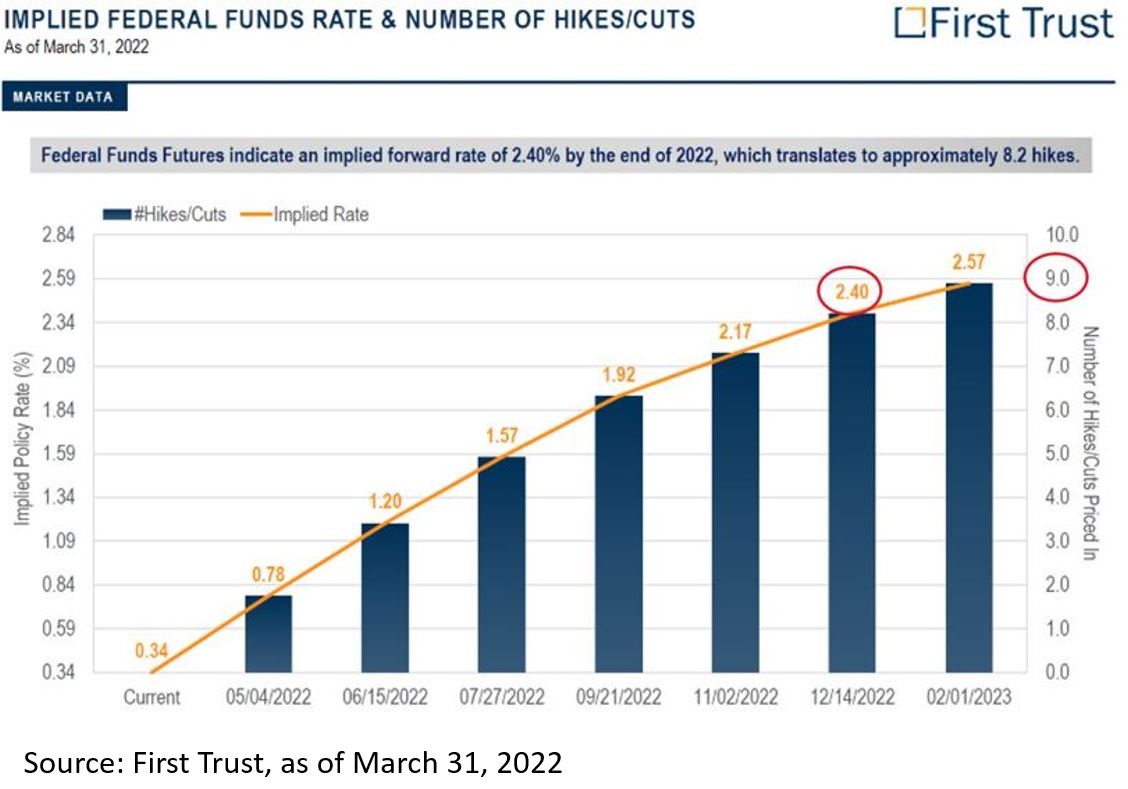“The stock market is a device which transfers money from the impatient to the patient.”
Warren Buffet
What we KNOW: A Look at the Past
From 1928-2021, the S&P 500 had 25 negative years. In other words, 73% of the time, stocks had positive returns. The characteristics and drivers of the negative years, however, are varied. Market crises can be relatively short, such as during the onset of COVID-19: the S&P 500 saw a 30%+ drop in a month, followed by a 60%+ subsequent increase from the trough over the rest of 2020. Periods of volatility can also be longer and drawn out, such as in the Great Depression of the 1920s-30s, when stocks brought negative returns over three consecutive years. However, no matter the market crisis or how unprecedented it was, the stock market has always bounced back.
The chart below examines the worst performing years for the U.S. Stock Market. Notice that after these historically negative years, the average 3-year return was +35%, while the average 5-year return was 80%.

While the past does not predict the future, a glance back at the last century tells a story: markets rise, and markets fall. But the probability of market rising is much higher than the market falling at any given time. If you are willing to tolerate the turbulent periods, you have the greatest chance of meeting your long-term financial goals.
In addition, we know that this current period of volatility differs from some historical ones in a specific way: the risk materialized in the bond market – not the stock market – first. Often in periods of economic uncertainty, investors will flee the stock market and find a haven in bonds, causing bonds to be in favor. 2022 has shown the opposite.
The interest rate hikes that precipitated bond prices to fall first may not yet be over, but as of March 31st, there were 9 more rate hikes baked into the current prices of bonds expecting the future rate to be 2.4% by the end of 2022. The chart below shows the implied Federal Funds rate.
Unless investors expect interest rates to be on a permanent upward trend or above this market expectation, it is unlikely that bonds will continue to decline at the same magnitude as they already have this year.

What we can CONTROL: A Look at the Future
Inflation and Spending Choices | As 2022 has shown, savers, spenders, and investors alike might all be understandably concerned with inflation readings in the 8-9% range. If that level is sustained, how will households maintain their standard of living? Where is inflation going?
According to present consensus, breakeven inflation rates published by the St. Louis Fed point to a 2.9% inflation rate over the next 5 years, and 2.6% over the next 10 years. The change in these long-term inflation expectations is minimal, if any: in February 2022, we saw the same breakeven rates as we do today. While the 8-9% inflation stings in the short term, these readings imply that the market expects the inflation to return to the historical average over the long run.
Despite the long-term perspective, running an errand to purchase groceries and gas for the week can still be shocking. For now, perhaps the best tool at our disposal is to defer unnecessary discretionary expenses to make room in the spending plan for higher costs on essentials. Discretionary spending is something that we can control and timing these expenses wisely will help the bottom line. For example, once supply shortages ease and oil prices fall, prices for home improvement items and autos should normalize, and airfare and hotel costs will become more feasible. Delaying these expenses is something that you can do to help your lifestyle remain sustainable despite higher costs.
The Bottom Line: What investors KNOW and what they can CONTROL will help navigate this period of economic and market uncertainty. Whether short or prolonged, bear markets have historically recovered. In the meantime, it is helpful to remind yourself of the positive historical evidence and take proactive measures to adjust your discretionary spending as you see feasible.
